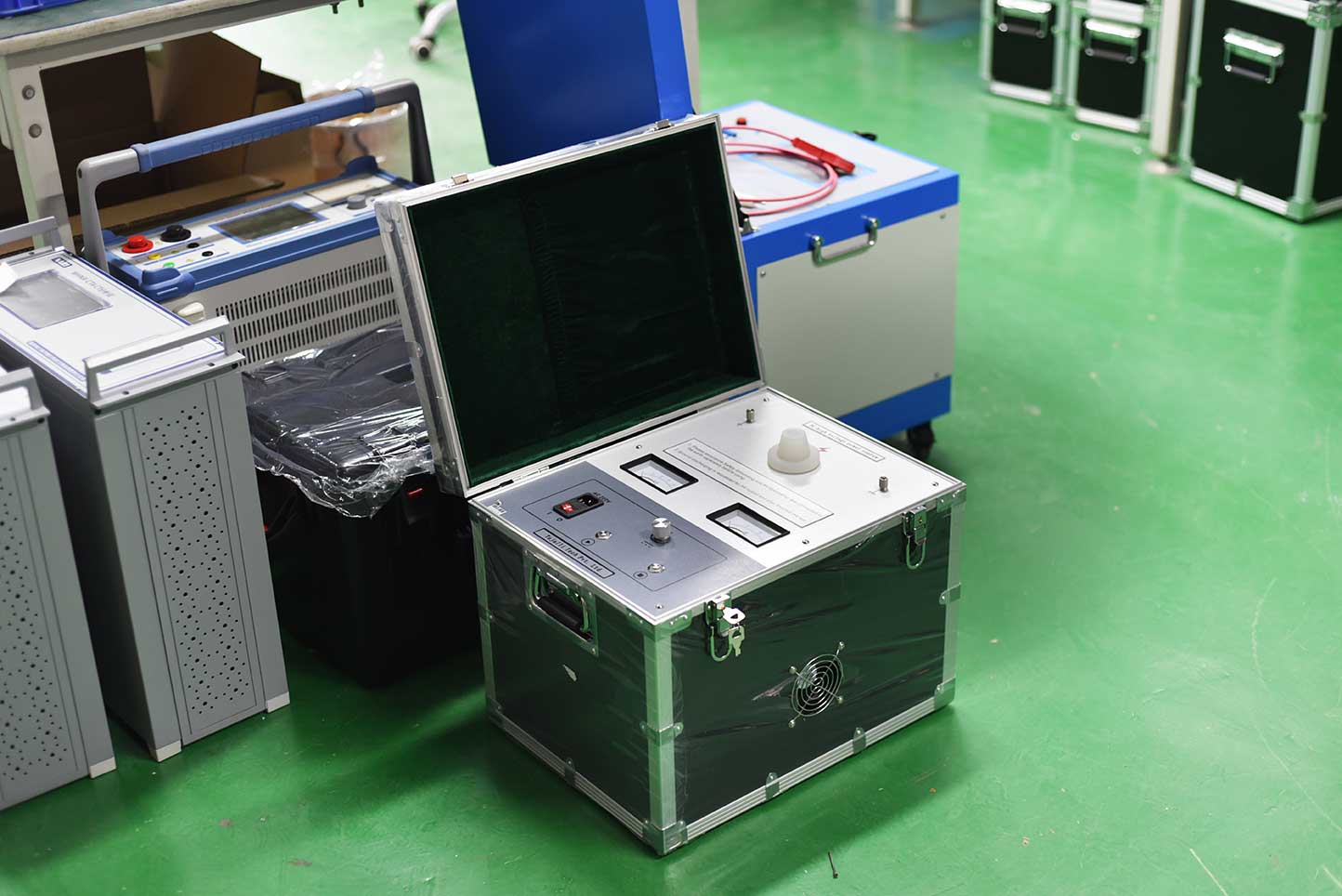Cable fault tester, also known as cable fault detector or cable fault comprehensive tester, is a comprehensive cable fault detection instrument. It can test various faults of cables, including high resistance flashover faults, high and low resistance grounding, short circuits, cable disconnections, and poor contacts. The following is a detailed introduction to the cable fault tester:
1. Function and Features
① Wide testing scope: The cable fault tester is particularly suitable for testing various models and voltage levels of power cables and communication cables.
② There are various testing methods: using various detection methods such as low-voltage pulse method and high-voltage flashover method, which can accurately test various faults of cables.
③ High precision and accuracy: The instrument adopts high-speed data sampling technology, making the test results accurate and intuitive.
④ Easy to operate: equipped with a fully Chinese menu display and operation function, without the need for specialized training for operators.
⑤ Portable design: With a small volume and portable appearance, it is powered by a rechargeable battery, making it easy to carry and use.
⑥ Multifunctionality: In addition to fault testing, it also has functions such as cable routing, positioning, and fault location.
2. Working principle
The testing principle of the cable fault tester is based on the radar ranging principle. The test end emits a pulse signal, and when it encounters a location with mismatched characteristic impedance (such as a fault point), a reflected wave will be generated. The instrument collects the incident and reflected waveforms and displays them on the screen. The distance from the fault point to the testing end can be calculated by clamping the dual electronic cursor at the two characteristic inflection points of the waveform.
3. Technical indicators
① The maximum testing distance is generally 32km, but the specific model may vary.
② Detection blind spot: usually 1m, which means the instrument cannot detect faults within 1m of the testing end.
③ Reading resolution: generally 1m, which is the minimum fault distance interval that the instrument can recognize.
④ Power consumption: Low, usually around 5VA, ensuring stability for long-term use.
⑤ Usage conditions: The ambient temperature is generally required to be between 0 ℃ and+40 ℃ (maximum temperature -10 ℃ to+50 ℃), the relative humidity is 20% to 90% RH at 40 ℃, and the atmospheric pressure is between (86 to 106) Kpa.
4. Usage method
① Preparation: Ensure that the internal power supply of the tester is connected and confirm that the battery is fully charged. If using an external power supply, ensure that the power supply is connected and functioning properly.
② Connecting cables: Connect the measuring port of the tester to the cable to be tested, ensuring a secure connection and good contact.
③ Set parameters: Based on the characteristics and requirements of the cable to be tested, set appropriate measurement parameters such as voltage range, current magnitude, measurement time, etc.
④ Start testing: Turn on the power switch of the tester and measure according to the instructions of the tester. The measurement results are usually displayed on the screen of the tester in numerical or graphical form.
⑤ Analysis results: Based on the displayed results, determine whether there is a fault in the cable and the type and location of the fault. For each test, relevant information should be recorded, including test time, test location, test parameters, measurement results, etc.
5. Precautions
Before using the cable fault tester, it is necessary to carefully read and follow the operating manual and safety tips of the tester.
When using the tester, it is important to ensure that the instrument is in a safe working environment, away from high temperatures, humidity, and flammable materials.
During testing, attention should be paid to avoiding incorrect wiring and ensuring that the connection between the cable and the tester is correct and reliable.
Pay attention to the safe use of high-voltage power supply. When using high-voltage mode for testing, it is necessary to comply with relevant safety operating procedures and wear protective equipment.
In short, cable fault testers are important tools for maintaining various cables and have broad application prospects and market demand.

The ZC-700A cable fault tester is a new generation portable cable fault tester designed and manufactured by our company based on user requirements and considering on-site use. It adheres to our consistent principles of high technology, high precision, and high quality, and elevates the level of cable testing to a new level. The cable fault tester consists of three main parts: flash testing, tracking, and positioning. The tester can be used to detect low resistance, high resistance, short circuit, open circuit, leakage and flashover faults of various cables, accurately detecting the location of fault points, cable length and cable burial path of underground cables. It has the characteristics of accurate testing, high level of intelligence, wide adaptability, stable performance, and lightweight portability.
Kvtester Electronics Technology Co.,Ltd. is a high-tech enterprise specializing in power testing, testing, research and development, production, and sales of testing equipment. It has been engaged in the electrical testing industry for many years, and its products are of high quality. We welcome customers to come and purchase. Service hotline: 0086-27-81778799, to learn more, visit the official website: www.kvtester.com





